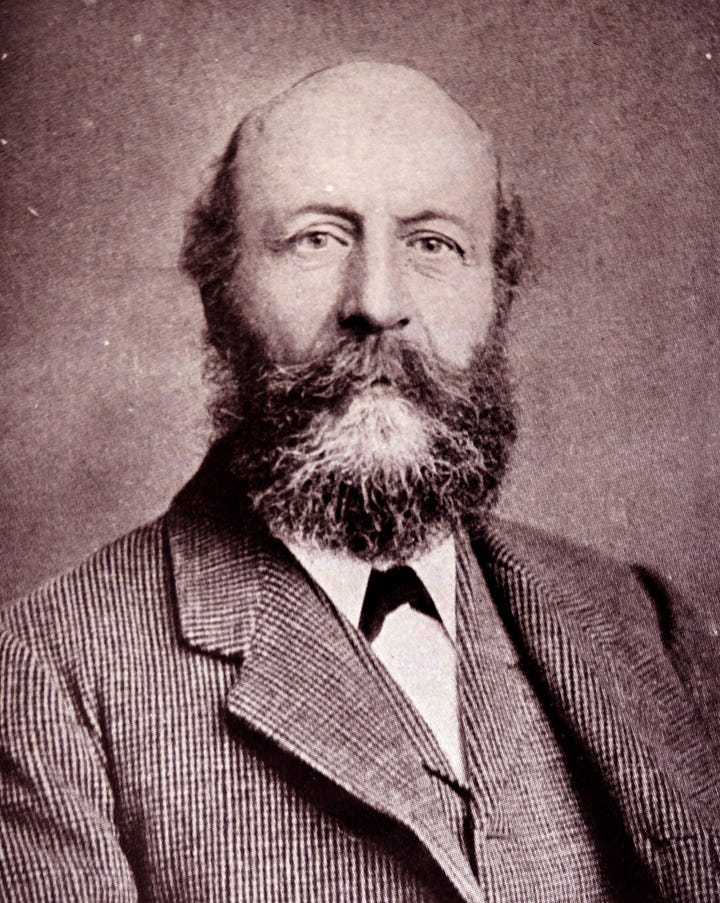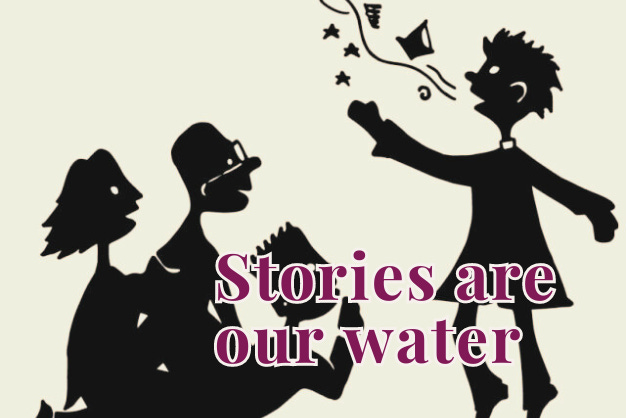Stories are our water
Four lesser-known stories about stories and what they taught me about storytelling
Ideas that help marketers master brand strategy and career growth. Performonks goes to 3,876 readers every week - subscribe here. Find The India Playbook here.
This edition is a day late because I was attending a wedding in Bombay.
Colleagues, bosses, and spouses had gathered to celebrate the union - a Sangam - of two people we admire, love and respect.
For three days the air crackled like a live wire circuiting stories back and forth. Prideful stories that were retold a millionth time, mischevous stories we chortled at, grateful stories we knew would not have happened were it not for each other, confessional stories that cleared the air… and more importantly, hopeful stories that promised we would stay in touch to create new stories.
This got me thinking that we are like David Foster Wallace’s fish. Stories are our water.
That’s why, this edition explores four lesser-known stories about stories and what they taught me about storytelling.
Moe Levine
Two triangles, a circle and a house moving across the screen
Kraft and Cadbury
The Broccoli Tree Parable
1. Moe Levine
Moe Levine was a famous lawyer in the US. He was called "the Shakespeare of trial advocacy," and some said that he may have been the greatest trial lawyer of his time.
This is his summation argument for a case.
This case won the highest ever settlement in history at that time.
This taught me that happy stories of meet-cutes and rags-to-riches are good. But they are also our safezone. Because when we don’t hit raw nerves or expose tender underbellies, we don’t risk judgement.
But sometimes, if we want impact, speed and finality, ugly is much better. Ugly delivered as show-and-tell is even betterer!
2. Two triangles, a circle and a house moving across the screen
In a research in 1944, 34 Massachusetts college students were shown a short film with two triangles, a circle and a house, moving across the screen.
When asked to describe it, thirty-three of the thirty-four respondents not only personified the objects, but also attached elaborate narratives to them. They said things like,
‘The two triangles were men fighting, as a woman (the circle) tried to escape’.
‘The circle was “worried.”’
‘The circle and the little triangle were “innocent young things.”’
This is called pareidolia -“the imagined perception of a pattern or meaning where it does not actually exist.” It’s what happens when we see shapes in the clouds or craft an entire universe of zodiac signs by playing ‘join the dots’ with stars.
This taught me that stories don’t live in our world. It is us who live rent-free in the world of stories. Because stories is how we make sense of anything that happens to us.
That’s why, it’s important that we ensure we tell ourselves stories that serve us by becoming our wings, not anchors that weigh us down.
3. Kraft and Cadbury
In 2009, when Kraft wanted to acquire Cadbury, it faced pushback - the public believed that Cadbury was a British jewel that the Yankees (Kraft) would loot and pillage. (As an Indian, I laugh at the irony).
Kraft softened the emotional blow of the merger by crafting a “coming together” story that higlighted commonalities between the two founders, J.L. Kraft and John Cadbury.


Kraft peppered stories from their histories to reassure employees that all will be well since they are united by the same values - both founders came from humble backgrounds, were deeply religious, generous to employees and valued innovation and high quality of products.
Well, the merger takeover went through. The question is what happened next.
Turns out that Kraft did not share Cadbury’s values after all. Employees were laid off and UK factories were shuttered to save cost (3G Capital, the private equity firm backing Kraft, is notorious for cutting costs too close to the bone).
It is said that Kraft’s plan all along was to get scale through Cadbury and then divide the company into two. Which they did. In 2012, the grocery business became Kraft Foods which was later bought by Heinz to become Kraft Heinz Co. Cadbury became Mondelez International Inc. Kraft Heinz flopped (they took a $15.7 billion write-down in its valuation, and had to pay $450 million to investors for ‘destructive cost cutting’) as Mondelez flourished.
The lessons here are straightforward. Sometimes, a story is just a story. Beware and don’t believe every story you hear. Second, we learn only over time which stories have happy endings and which don’t.
4. The Broccoli Tree Parable
John Green, a photographer, started posting pictures of a tree that resembled a broccoli on Instagram. He did not give it much thought, neither did he ‘photoshop’ the images. He just kept posting because he liked the tree.
His intention was not to ‘tell a story’, but his audience assigned meaning anyway and his Instagram page acquired a life of its own.
Tourists flocked to see the broccoli tree, and an entire community that felt emotionally connected to it was born.
Then one day, just as abruptly as it began, the story ended. Someone had chopped the tree down.
John Green, who had started this page as a lark, felt a deep emotional loss, and he made this 3:55 minute video:
To share something is to risk losing it. If we hoard and hide what we love, we can still lose it. Only then, we’re alone in the loss. You can’t unsaw a tree, but you can’t unsee one either. The broccoli tree is gone, but its beauty survives.
John Green
This taught me that you can’t unsee a story. And once it resonates with you, you can’t unremember it either.
This is the penultimate bitter sweet lesson I learnt as I wrote this article.
It taught me that if stories overflow with joy, they also are reservoirs of sadness. Because when people go, they take our stories with them. Those parts of our lives, conversations, and experiences that we shared together, disappear with them.
One day we realize with a thud that those remembrances? We can’t discuss with anyone else. We can’t refresh a small detail over a phone call. Those moments are lost forever.
I guess that’s why maybe people write memoirs.
That’s why my dear readers, when friends get married, go to the wedding. Go for that reunion, that cup of coffee, that movie, and that trip.
There may come a time when we have no one to write our stories with.
See you next week.
Sources:
Moe Levine: https://www.trialguides.com/blogs/authors/moe-levine
The experiment: https://www.coli.uni-saarland.de/courses/agentinteraction/contents/papers/Heider44.pdf
Kraft and Cadbury
https://www.ft.com/content/1cb06d30-332f-11e1-a51e-00144feabdc0
https://www.bloomberg.com/graphics/2019-opinion-cadbury/
https://insights.issgovernance.com/posts/kraft-heinz-agrees-to-450-million-settlement-over-destructive-cost-cuts-following-merger/
The Broccoli Tree: https://www.picturecorrect.com/a-photographers-parable-of-the-broccoli-tree/









Beautiful stories. Thanks for sharing them! Love the Kraft-Heinz failure and the Broccoli tree parable